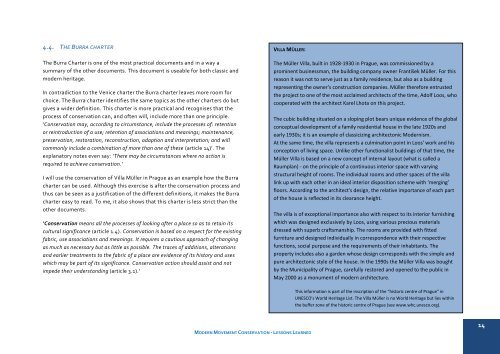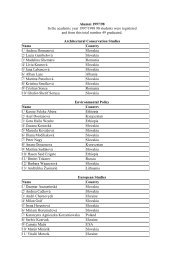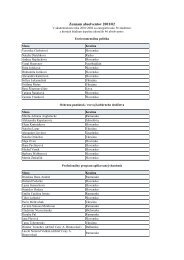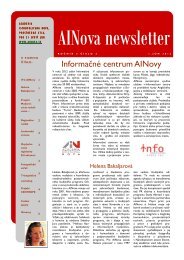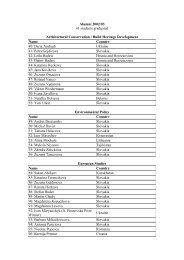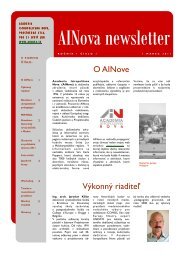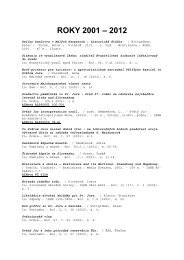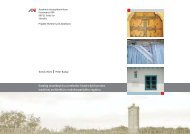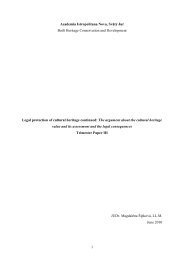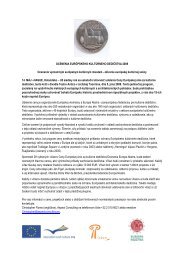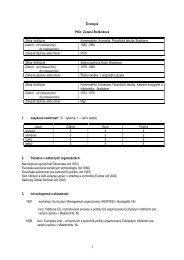modern movement modern movement conservations lessons learned
modern movement modern movement conservations lessons learned
modern movement modern movement conservations lessons learned
You also want an ePaper? Increase the reach of your titles
YUMPU automatically turns print PDFs into web optimized ePapers that Google loves.
4.4. THE BURRA CHARTERThe Burra Charter is one of the most practical documents and in a way asummary of the other documents. This document is useable for both classic and<strong>modern</strong> heritage.In contradiction to the Venice charter the Burra charter leaves more room forchoice. The Burra charter identifies the same topics as the other chart ers do butgives a wider definition. This charter is more practical and recognises that theprocess of conservation can, and often will, include more than one principle.‘Conservation may, according to circumstance, include the processes of: retentionor reintroduction of a use; retention of associations and meanings; maintenance,preservation, restoration, reconstruction, adaption and interpretation; and willcommonly include a combination of more than one of these (article 14)’. Theexplanatory notes even say: ‘There may be circumstances where no action isrequired to achieve conservation.’I will use the conservation of Villa Müller in Prague as an example how the Burracharter can be used. Although this exercise is after the conservation process andthus can be seen as a justification of the different definitions, it makes the Burracharter easy to read. To me, it also shows that this charter is less strict than theother documents.‘Conservation means all the processes of looking after a place so as to retain itscultural significance (article 1.4). Conservation is based on a respect for the existingfabric, use associations and meanings. It requires a cautious approach of changingas much as necessary but as little as possible. The traces of additions, alterationsand earlier treatments to the fabric of a place are evidence of its history and useswhich may be part of its significance. Conservation action should assist and notimpede their understanding (article 3.1).’VILLA MÜLLER:The Müller Villa, built in 1928-1930 in Prague, was commissioned by aprominent businessman, the building company owner František Müller. For thisreason it was not to serve just as a family residence, but also as a buildingrepresenting the owner's construction companies. Müller therefore entrustedthe project to one of the most acclaimed architects of the time, Adolf Loos, whocooperated with the architect Karel Lhota on this project.The cubic building situated on a sloping plot bears unique evidence of the globalconceptual development of a family residential house in the late 1920s andearly 1930s; it is an example of classicizing architectonic Modernism.At the same time, the villa represents a culmination point in Loos' work and hisconception of living space. Unlike other functionalist buildings of that time, theMüller Villa is based on a new concept of internal layout (what is called aRaumplan) - on the principle of a continuous interior space with varyingstructural height of rooms. The individual rooms and other spaces of the villalink up with each other in an ideal interior disposition scheme with ‘merging’floors. According to the architect's design, the relative importance of each partof the house is reflected in its clearance height.The villa is of exceptional importance also with respect to its interior furnishingwhich was designed exclusively by Loos, using various precious materialsdressed with superb craftsmanship. The rooms are provided with fittedfurniture and designed individually in correspondence with their respectivefunctions, social purpose and the requirements of their inhabitants. Theproperty includes also a garden whose design corresponds with the simple andpure architectonic style of the house. In the 1990s the Müller Villa was boughtby the Municipality of Prague, carefully restored and opened to the public inMay 2000 as a monument of <strong>modern</strong> architecture.This information is part of the inscription of the “historic centre of Prague” inUNESCO’s World Heritage List. The Villa Müller is no World Heritage but lies withinthe buffer zone of the historic centre of Prague (see www.whc.unesco.org).MODERN MOVEMENT CONSERVATION - LESSONS LEARNED14


